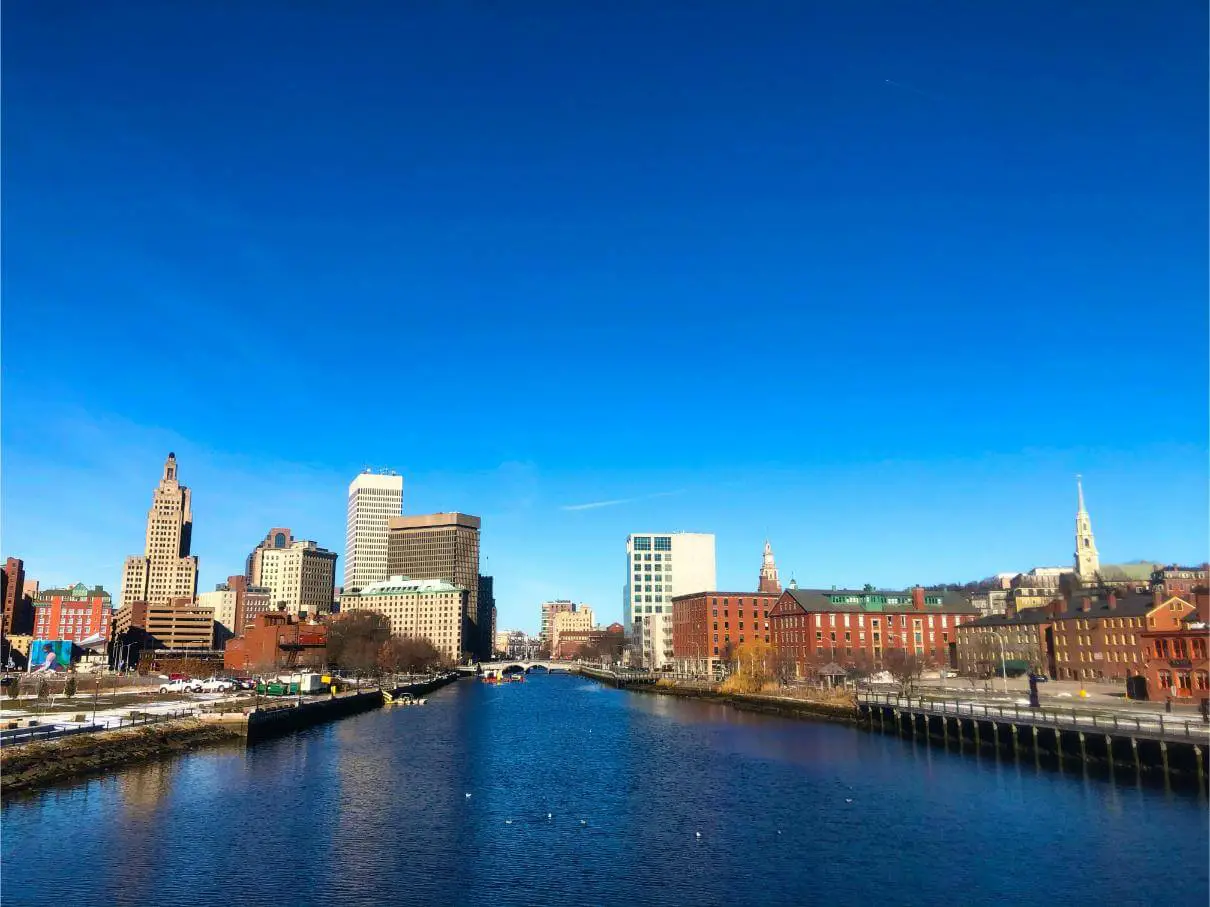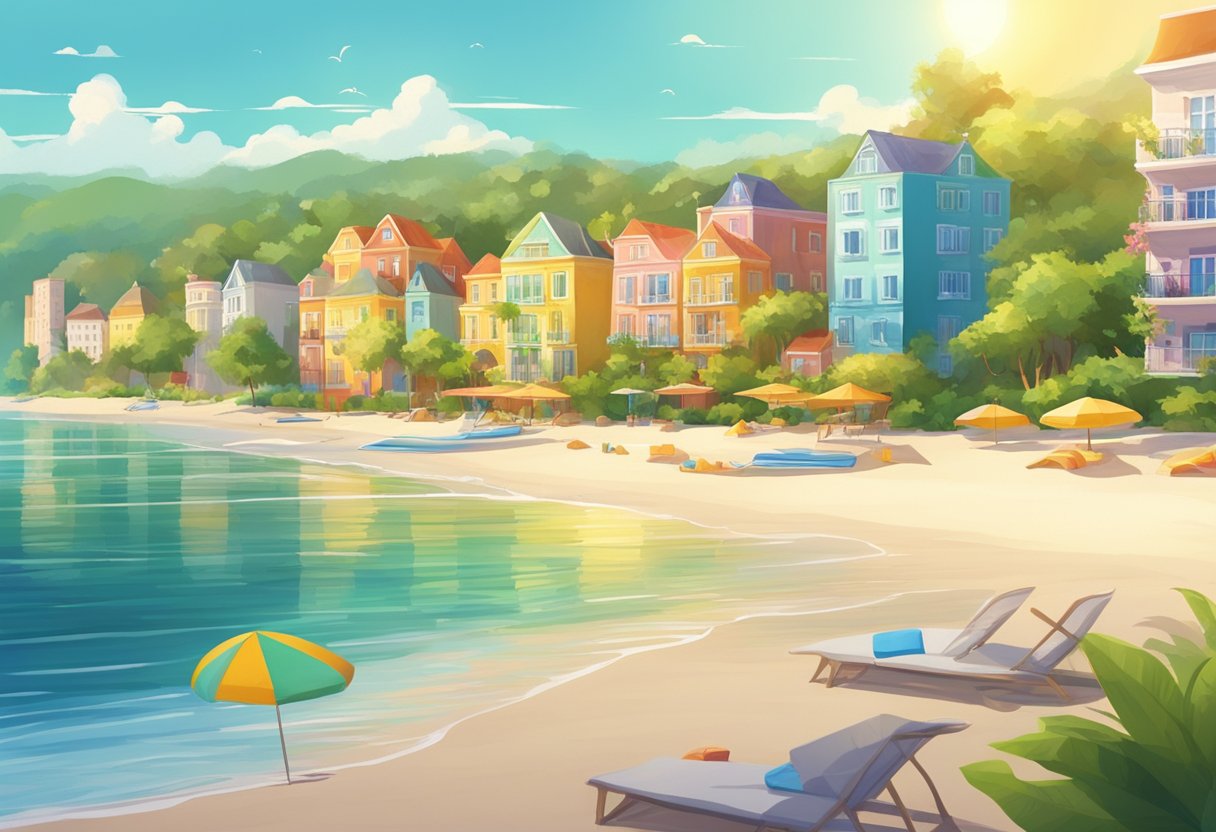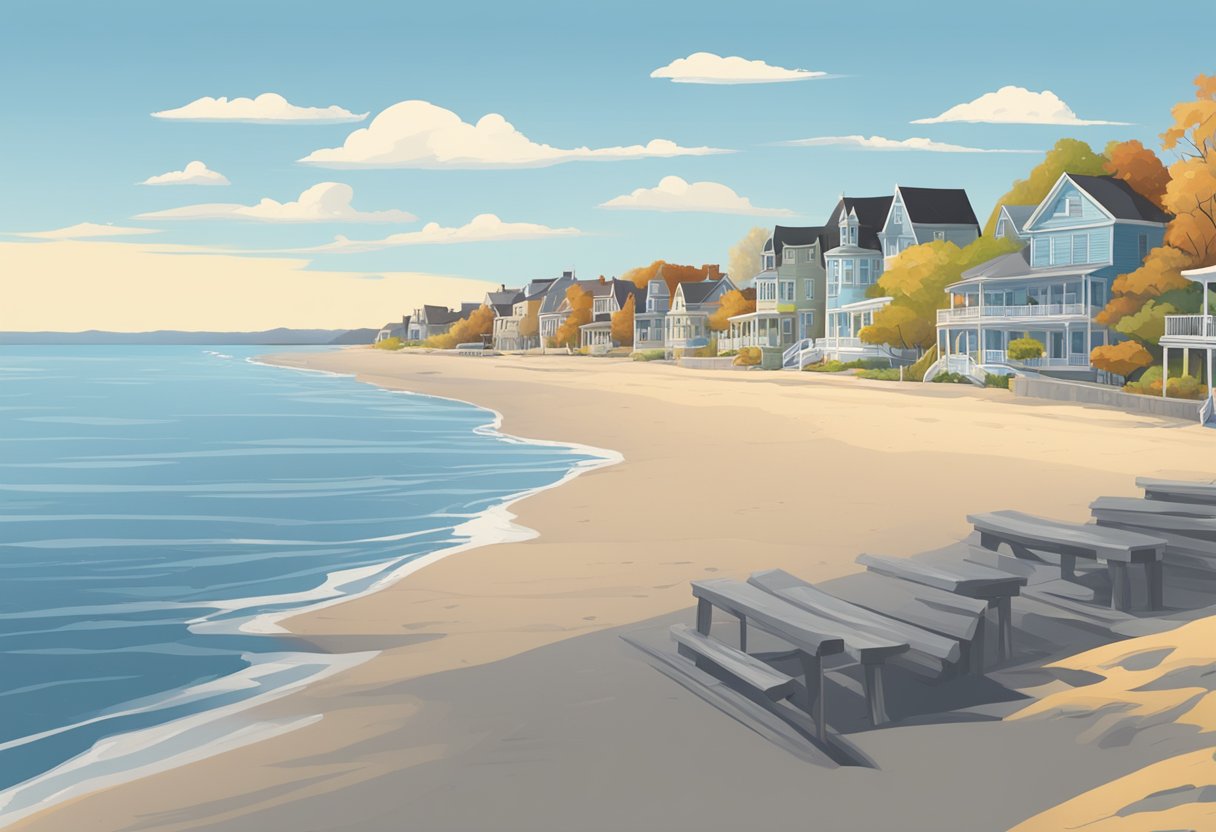
When Is the Best Time to Visit
Rhode Island, known for its stunning beaches and colonial towns, has its charms throughout the year. However, the best time for you to visit depends on your interests.
May to September: This is the ideal window for beach lovers. Warm weather ensures your seaside experience is comfortable, with average summer temperatures around 70-85°F.
- June to August: Peak tourist season.
- Pros: Full access to beaches and attractions.
- Cons: Crowded spots and higher prices.
October for Fall Foliage: If you’re keen on autumn colors, late October sees Rhode Island’s landscapes burst into brilliant hues.
- Weekends can get busy: Plan for weekday travel if possible.
Winter: For cozy getaways and fewer tourists, winter’s chill transforms the state into a quiet retreat with the chance for picturesque snowfall.
- Snow enthusiasts: January and February, though cold, offer activities like skiing and snowboarding.
Here’s a quick summary to help you decide:
| Season | Pros | Cons |
|---|---|---|
| Spring | Mild weather, fewer crowds | Occasional rain, chilly nights |
| Summer | Best for beach activities | Crowds, higher prices |
| Fall | Gorgeous foliage | Popular, especially on weekends |
| Winter | Serene atmosphere | Cold, potential for snowstorms |
Remember to check event calendars for festivals and local happenings during your planned visit to catch Rhode Island’s vibrant culture.
When Is the Worst Time to Visit
If you don’t love the cold, you might want to steer clear of Rhode Island from late December through February. This time frame brings the chilliest weather, with temperatures often dipping below freezing. Not only is it cold, but snow can also cause travel disruptions.
- Weather: Expect cold and potentially snowy conditions.
- Average temperatures: 20-35°F (-6 to 2°C)
Another period that could be less than ideal is midsummer, especially July through mid-August, when the humidity soars and tourist spots get super crowded. Beaches and other attractions are often packed, and accommodation prices spike due to the high demand.
- Crowds & Costs:
- Accommodation: High prices due to demand.
- Beaches: Overcrowded with tourists.
Heavy rains and the threat of hurricanes occur in late summer and early fall, specifically from August to September. While hurricanes hitting Rhode Island directly are rare, the remnants can still bring wet and windy conditions that might ruin your beach plans.
- Storm Season:
- August-September: Higher chance of rain and storms.
The Cheapest Time to Visit

When you’re looking to save on your trip to Rhode Island, timing is key. Prices for hotels and flights vary with seasons, but there are certain times when you can snag a deal.
Off-Peak Season: Most tourists hit Rhode Island during summer, making it the priciest season. However, if you visit from late fall to early spring, your wallet will thank you. This is when you can find lower hotel rates and cheaper flights due to decreased demand.
Weather Watch: Winter (December to February) usually sees fewer visitors because of cold weather and snow. While this could mean even better deals, be prepared for chilly conditions and potentially limited access to some attractions.
Budget Tip: Look for accommodation and travel discounts during January and February. Since it’s after the holidays, prices tend to drop and you might get even better offers.
Accommodation and Airfare:
- January and February: Expect discounts on hotels and potentially lower airfare.
- Late fall: Less crowded, moderate prices, but cooler weather.
- March and April: As winter fades, prices remain on the lower side with the added perk of spring’s arrival.
Events to Consider: Rhode Island has various off-season events which can enrich your visit without a high price tag:
- Newport Winter Festival: Offers fun at a fraction of the summer cost.
- Providence Restaurant Weeks: Great for trying local cuisine affordably in January.
Remember that booking in advance and being flexible with your travel dates can help you find the best deals. Keep an eye out for last-minute offers as well, sometimes those can be surprisingly affordable.
Off-Season: Least Busy Time to Visit

If you’re looking to avoid crowds, the off-season in Rhode Island is typically from late fall to early spring. You’ll find fewer tourists during this time, which means more peace and quiet for you.
Late Fall (November)
- Accommodations are more affordable.
- Attractions are less crowded.
- Cooler weather for outdoor activities.
Winter (December to February)
- Beaches are empty; serene walks, anyone?
- Chance to see Rhode Island’s winter beauty.
- Note: Some attractions may have limited hours or be closed.
Early Spring (March to April)
- The state starts to bloom, less busy than summer.
- Mild weather for exploring towns and nature.
- Still possible to snag off-season lodging deals.
Remember, off-season travel can also mean some local businesses might be closed or have reduced hours. Always check ahead for the places you’re interested in.
The Most Expensive Time to Visit

When planning your Rhode Island trip, consider your budget because some times of year can really stretch your wallet. The peak season, when prices tend to soar, is from June to August. This is when you’re likely to see higher costs across the board – from hotels to attractions.
Typical Price Increases:
- Hotels: Rates can jump significantly. For example, a standard room that might cost $100 per night off-season could double in price.
- Car Rentals: Expect to pay more for a rental car. Prices can increase by at least 30% compared to quieter months.
| Season | Hotel Rates | Car Rentals |
|---|---|---|
| Off-season | $100 (estimate) | $40 (estimate) |
| Peak-season | $200+ (estimate) | $55+ (estimate) |
Festivals and Events: Local events, like the famous Newport Jazz Festival, attract visitors worldwide, causing a spike in demand and prices.
Advice for Your Wallet:
- Book early: You can sometimes snare a better deal if you book your stay a few months in advance.
- Flexible travel dates: If you can swing it, coming just before or after the peak can save you money.
Remember, while the summer offers the best weather and numerous festivals, it’s also the time when you’ll face the highest prices. If saving money is a priority for you, aim for the shoulders of the peak season or even consider the charm of Rhode Island in the fall or spring.
Hottest Months

In Rhode Island, July and August are typically the warmest months. During this period, average high temperatures hover around 82°F (28°C). It’s a great time for beach goers, as the Atlantic waters are at their most inviting.
July: You can expect the heat to crank up. With humidity, sometimes it feels hotter than the thermostat reads.
- Average high: 82°F (28°C)
- Average low: 63°F (17°C)
August: This month is pretty much a repeat of July, heat-wise.
- Average high: 81°F (27°C)
- Average low: 63°F (17°C)
Be aware, temperatures can peak over 90°F (32°C), especially inland. You might want to pack light clothes and sunscreen if you’re planning outdoor activities. Evenings can be quite pleasant, so having a light jacket could be wise.
Staying hydrated and applying sun protection regularly are musts. Also, finding shade during midday can make your time more enjoyable and protect you from heat exhaustion.
Lastly, Rhode Island’s hottest months also bring thunderstorms occasionally. They can be a brief respite from the heat, but keep an eye on the weather forecast if you’re planning outdoor adventures.
Coldest Months

When you’re planning a trip to Rhode Island, you might want to know when you’ll need to bundle up the most. So, the coldest months are definitely a key consideration.
January and February stand out as the chilliest time of the year. Average temperatures hover around the low 20s to the mid-30s (in degrees Fahrenheit). That means, if you’re visiting in this period, you should pack your warmest clothes.
- Average Low/High in January
- Providence: 20°F / 37°F
- Newport: 22°F / 36°F
- Average Low/High in February
- Providence: 21°F / 39°F
- Newport: 23°F / 38°F
Keep in mind, snow can be a common sight during these months, with January usually seeing the most. So if you’re dreaming of a snowy getaway, this is your time. But if you’d rather avoid the cold and potential travel disruptions it can bring, consider planning your visit for later in the year.
To stay warm and safe, don’t forget to check the local weather and be prepared for winter driving conditions if you’re renting a car or driving your own. Stay cozy out there!
Month-By-Month Weather
In January, you’re looking at chilly temperatures in Rhode Island, often ranging from 20°F to 38°F. February is pretty similar, though you might get slightly less cold days. Bundle up!
March brings a bit of warmth with highs averaging from 40°F to 50°F, but the weather is still unpredictable, so keep a jacket handy.
Once April rolls in, you’re enjoying milder weather. Temperatures typically swing between 46°F and 60°F. You can leave the heavy coat at home but carry a light one.
May is when things really start to look up. You see averages from 54°F to 70°F, perfect for outdoor activities without the heat getting to you.
June: Hello, summer! Your days now range from 63°F to 77°F. Bring your summer clothes and sunscreen.
July and August are the hottest months, with temperatures between 68°F and 83°F. It’s beach time, but don’t forget to stay hydrated.
September sees a cool down, with temps between 61°F and 75°F. You’re getting the best of both worlds—warm enough for the beach but cool enough to enjoy a hike.
In October, the crisp air of autumn arrives, temperatures range from 48°F to 65°F. It’s a good time for seeing fall foliage.
Come November, it gets colder, with temperatures between 38°F and 53°F. Time to get those warm clothes out again.
December is your classic winter set up with weather from 28°F to 44°F. Expect some snowflakes and holiday spirits in the air. Warm boots are your friend.
Frequently Asked Questions

Planning your trip to Rhode Island means knowing when to pack your bags for the best experience.
What are the peak tourist seasons in Rhode Island?
Peak tourist seasons in Rhode Island are summer months, from June to August, when you can enjoy warm weather and the state’s famous beaches.
How does the weather change with seasons in Rhode Island?
The weather in Rhode Island ranges from hot summers to cold winters. Spring and fall offer mild temperatures, making them a comfortable time to visit.
What are the top activities in Rhode Island during summer?
During summer, you can explore outdoor activities like sailing in Newport, attending music festivals, or lounging on Narragansett Bay’s beaches.
Can you enjoy Rhode Island as a winter destination?
Yes, you can appreciate Rhode Island in winter, especially for its festive holiday markets, cozy coastal towns, and skiing opportunities at Yawgoo Valley.
When is the off-season for travel in Rhode Island and what are its advantages?
The off-season, from November to March, offers fewer crowds and lower prices. It’s a great time to explore the local culture at a leisurely pace.
What events or festivals are unique to Rhode Island throughout the year?
Rhode Island hosts several unique events, including the Newport Jazz Festival in summer and the Jack-O-Lantern Spectacular in fall.
